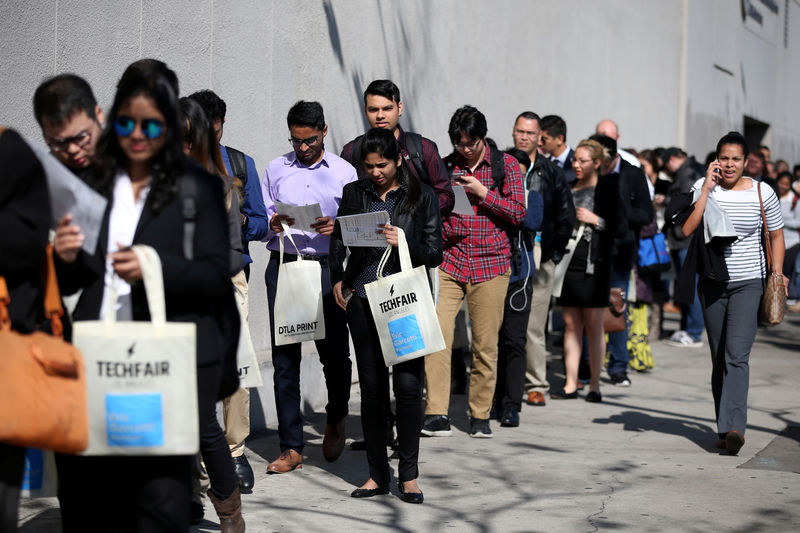By Lucia Mutikani
WASHINGTON (Reuters) - U.S. job openings fell in November, pulled down by sharp declines in construction and other services, but did little to change views that the economy is facing a shortage of workers.
Job openings, a measure of labor demand, dropped by 243,000 to a seasonally adjusted 6.9 million, the Labor Department said in its monthly Job Openings and Labor Turnover Survey, or JOLTS, on Tuesday. Despite November's drop, job openings outpaced the number of unemployed people that month by 870,000.
"We see no change in the big picture labor market story from the latest job openings data," said John Ryding, chief economist at RDQ Economics in New York.
Job openings hit a record high of 7.3 million in August. The decline in job openings in November was led by a 66,000 drop in the other services category.
Construction vacancies fell 45,000. The decrease in job openings in November was concentrated in the West region.
But there were increases in vacancies in the transportation, warehousing, and utilities sector as well as finance and insurance, and education and health services.
The job openings rate slipped to 4.4 percent from 4.5 percent in October. Hiring declined 218,000 to 5.7 million in November. The hiring rate fell to 3.8 percent from 4.0 percent in October.
WORKERS SCARCE
Anecdotal evidence has been growing of companies experiencing difficulties finding workers, a phenomenon that economists expect will slow down job growth this year.
A survey from the NFIB on Tuesday showed the share of small business owners reporting job openings they could not fill surged five points to a record high of 39 percent in December. Most of these vacancies were in manufacturing.
"It won't get easier for small businesses to fill open positions but it's premature to conclude there are significant labor supply issues," said Ryan Sweet, as senior economist at Moody's Analytics in West Chester, Pennsylvania.
The government reported last Friday that nonfarm payrolls increased by 312,000 jobs last month, the largest gain since February. Job growth averaged 220,000 per month in 2018. Job gains are expected to slow to around 150,000 per month this year as workers become more scarce.
The JOLTS report also showed the number of workers voluntarily quitting their jobs falling 112,000 to 3.4 million in November. The quits rate, which policymakers and economists view as a measure of job market confidence, was unchanged at 2.3 percent.
Some economists said the steady quits rate suggested moderate wage inflation, which could make the Federal Reserve cautious about raising interest rates too high this year.
The U.S. central bank has forecast two rate hikes this year, but Fed Chair Jerome Powell said last week "we will be patient as we watch to see how the economy evolves."
"It is just that the labor market is not going into overdrive where it could lead to an overheating economy with labor shortages, sharply higher wages and more inflation, and this will keep the Fed cautious on the need to move interest rates gradually higher this year," said Chris Rupkey, chief economist at MUFG in New York.
Layoffs were little changed at 1.8 million in November, holding the layoffs rate at 1.2 percent for a second straight month.
The Labor Department has not been affected by the partial shutdown of the U.S. government and will continue to publish economic data complied by its statistics agency, the Bureau of Labor Statistics.

Data releases from the Census Bureau and Bureau of Economic Analysis, including November trade figures, which were scheduled for publication on Tuesday, have been suspended during the shutdown, which started on Dec. 22 amid demands by President Donald Trump for $5 billion in funding for a wall on the U.S.-Mexico border.